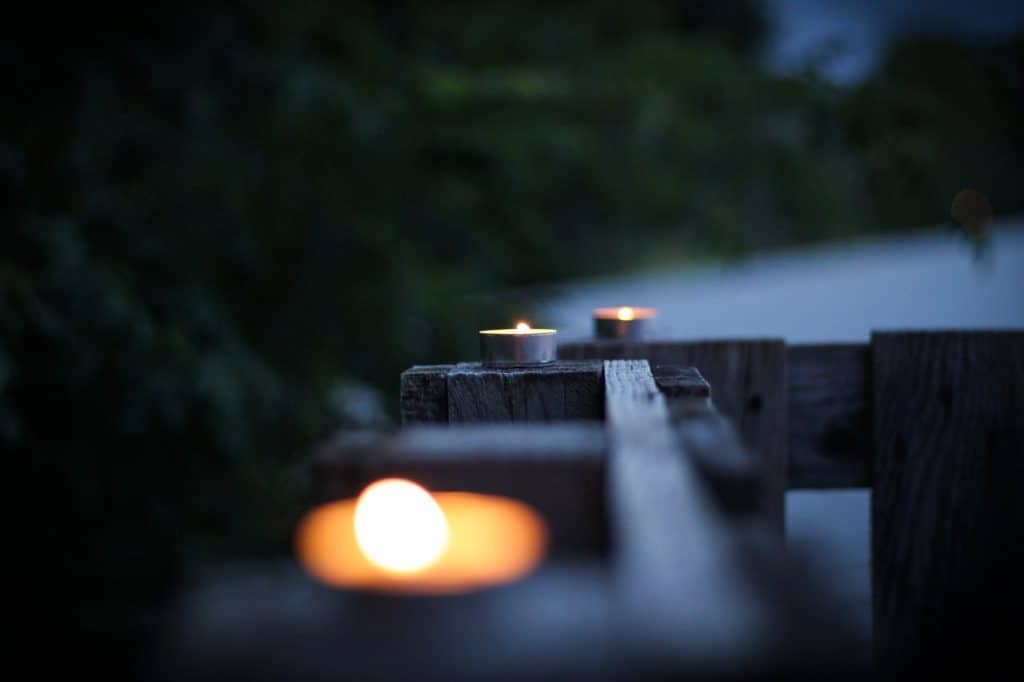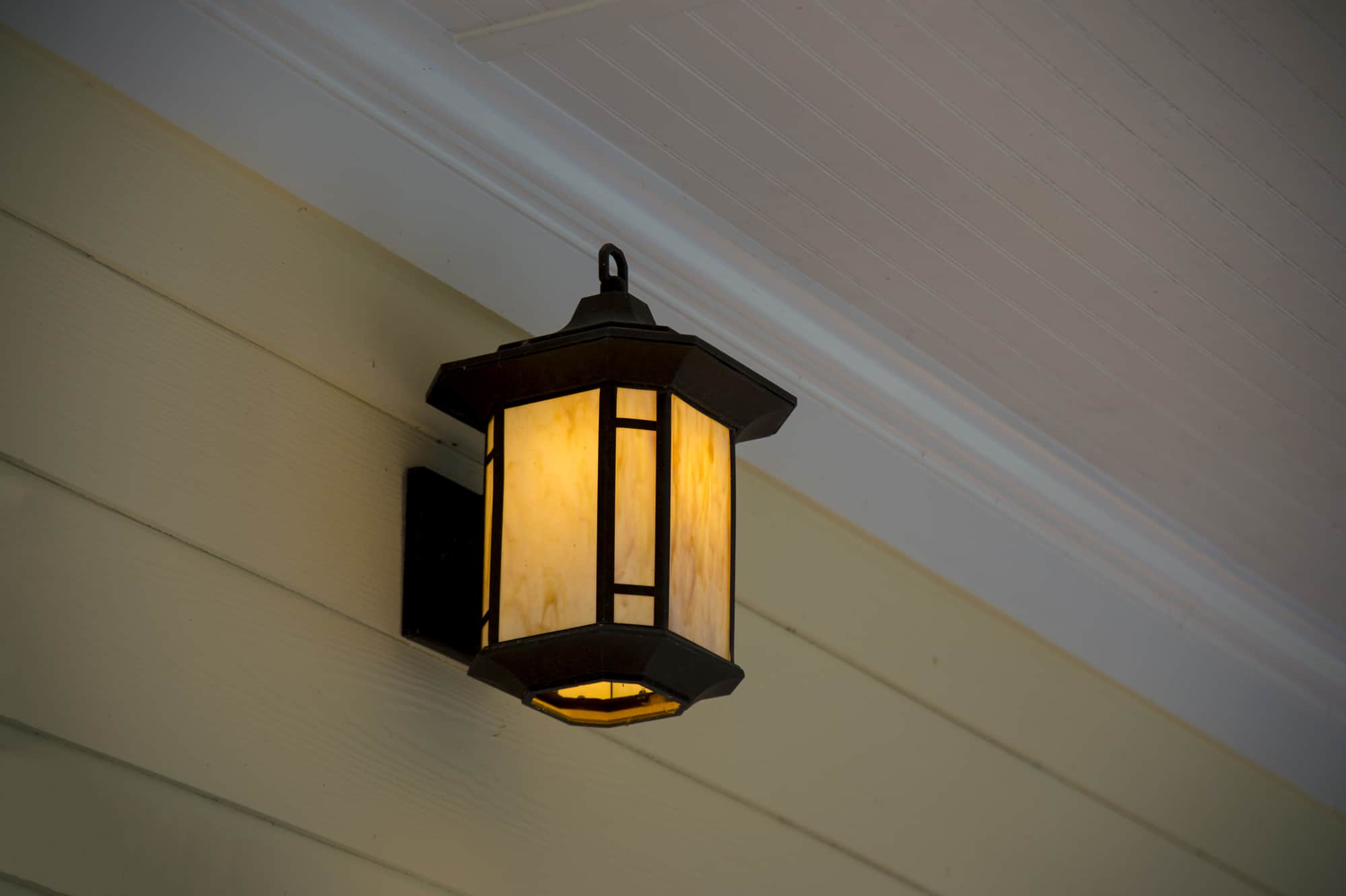You aren’t the first person to be annoyed by bugs buzzing around your patio lights, and you definitely won’t be the last.
If you’re sick of swatting bugs away as you sit in the glow of your patio light reading a book or sipping on a cold beer, we’ve got the solution to your problem.
The best way to keep bugs out of outdoor light fixtures is by swapping the bulbs out for yellow compact fluorescent lights (CFL) or low-heat LEDs as bugs cannot detect these. Lighting citronella candles or starting a campfire with sage, lemon balm, or cedar bark mixed in can also be beneficial.
Keep reading to learn more about why bugs are attracted to light if it’s bad for bugs to get into outdoor lights, and what you can do to prevent this from happening (hint: bug zappers aren’t the answer), so you can enjoy your evenings more.
Why Are Bugs Attracted to Light?
If you’ve ever had a moth in the house, chances are you’ve used the handy trick of turning off all your lights and shining a flashlight to guide it outside. Many bugs, like moths, are attracted to light, but why?
These light-lovers have a trait called positive phototaxis. Essentially, this just means that such bugs use light as a guide, so they’re drawn towards it. Light helps them see!
Not all insects have this characteristic, though. Some, like beetles, are negatively phototactic. As you can guess, these critters respond the opposite way to light — they’re repelled by it.
If you ever need to get the creepy crawlies out of your house, shine a light behind them, and they’ll want to run away from it.
Is It Bad for Bugs To Get Into Outdoor Lights?
Well, it’s certainly not a good thing for bugs to find their way inside outdoor lights. For starters, if an insect gets stuck in a light fixture with no way out, it will overheat in the warmth of the light and die.
You’d think they’d learn their lesson and not instinctually fly towards light, but hey, nature works in weird ways.
While it’s clearly unfortunate for a bug’s own safety to get caught in outdoor lights fixtures, it’s not great for you either.
Let’s be real — the look of bugs trapped inside a fixture is unsightly, to say the least. After a while, you might want to replace your light because of this, and we don’t blame you.
On top of aesthetics, it’s just plain irritating. When you’re sitting outside, trying to soak in a gorgeous evening, flies swarming your seating area is less than ideal.
Whether you can hear them buzzing around in your ear or you can see them out of the corner of your eye, it’s not the most comfortable experience for most.
As if you need any more reason to search for an anti-bug lighting solution, there’s also the whole biting thing. This may not be a problem with light-loving insects, like moths.
Others, such as mosquitos, can leave you with a no-so-nice itchy bump. These can really put a damper on a patio party!
All the more reason to search for a way to protect yourself, your lights, and the bugs.
Should I Use a Bug Zapper?
Bug zappers can provide some relief from insects flying their ways into light fixtures, but it may not be the best solution.
Instead of deterring bugs from coming your way in the first place, bug zappers attract them and just kill the ones on their way. It’s not exactly a preventative measure but rather a band-aid solution.
In fact, it may bring even more unwanted bugs to your area, and who’s to say they’ll maintain their beeline towards the zapper and not fly towards you?
On top of this, bug zappers can actually pose a threat to the environment. Since these devices don’t discriminate between which insects they kill, they can endanger biodiversity. So, are they worth it? The answer is a definite no.
If a bug’s attraction to outdoor light fixtures is a problem for you and them alike, there must be a solution, right? There is!
Use Citronella Candles

Just like how there are certain smells that humans don’t like, there are odors that drive bugs away too. Citronella is one of them. Bugs can’t stand this bright lemony smell, but luckily for us humans, most people enjoy it.
Citronella candles are pretty easy to come by. Take a look down the outdoor living aisle of your local home improvement store, or keep an eye out at department and off-price retail shops.
If you’re confident in your candle-making abilities, you can even DIY some!
Light up one or two of these candles, and bugs won’t want to come anywhere near you or your light fixtures. Plus, you get to enjoy the glow of a beautiful dancing flame to enhance your outdoor ambiance.
Light a Fire
A roaring fire can help prevent insects from bothering you and your light fixtures. Smoke naturally repels bugs, so bring on those flames and get that wood burning.
If you want to make your fire even more effective, try throwing in some powerful bug-repellent herbs like lemon balm, cedar bark, sage, or leaves from our beloved friend, citronella.
Just like with candles, you’ll also get the added benefit of enjoying a lovely campfire. What more could you ask for?
Swap Out Your Lights
Sometimes, starting up a pit fire is too big of a hassle, especially if you want to keep bugs out of your light fixtures 24/7. Obviously, you can’t leave campfires or candles roaring all night long. Instead, you can try changing up your lightbulbs to something insects won’t be attracted to — or even be able to see.
A safe alternative to standard lightbulbs is LEDs. These don’t give off ultraviolet light, something bugs love, so LEDs are a helpful option for repelling these critters.
However, if your lights are too hot, they can have an adverse effect. Make sure your bulbs don’t reach temperatures near 6,000 Kelvin, or else they can defeat the purpose.
Bugs can’t detect all of the colors that humans can — red, orange, and yellow shades aren’t visible to them. You can also try swapping your bulbs for ones that emit yellow light, and you’ll be shocked at how much of a difference it makes! The warm hue can add a cozy element to your outdoor experience too.
Stay far away from hot lights with glowing filaments and high wattages. These are prime insect-attracting qualities, and that’s the last thing we want. If LEDs aren’t to your taste, look for yellow compact fluorescent lights (CFL).
You’ll achieve all the brightness your heart desires without the high wattage.
Changing your lights is arguably the best and most convenient method to keep bugs far, far away. All it requires is a trip to the hardware store and a quick screwing-in of the bulb.
Think of this as solving the problem right at the source.
Final Thoughts
Bugs swarming, invading, and buzzing around outdoor light fixtures is an annoying phenomenon we’ve all experienced. Any insects with positive phototactic qualities will naturally be drawn to light.
The best way to keep bugs out of outdoor light fixtures is by swapping your bulbs for low wattage alternatives that don’t reach high heat like LEDs or ones with a warm hue like yellow CFLs.
Other natural bug-repelling options to prevent them from getting inside outdoor light fixtures are lighting citronella candles or starting a campfire. Adding lemon balm, cedar bark, or sage can make the fire more effective.
Sources
- Wonderopolis: Why Are Bugs Attracted to Light?
- Healthline: Do Moths Bite?
- New York Times: Do Bug Zappers Work? Yeah — About As Well As Any Other Indiscriminate Wildlife Slaughter.
- Reno Talk: 4 Ways To Get Rid Of Bugs Hovering Around Your Lights
- Wonder How To: Keep Mosquitoes & Other Annoying Bugs Away from Your Campfire or Backyard Fire Pit

